Editor’s Note: In April 2016, Glenn Lowry, long-time director of New York’s world-renowned Museum of Modern Art, joined CNN Style as guest editor. He commissioned a series of powerful stories on the theme of migration.
Story highlights
Zineb Sedira produces artwork relating to themes of migration and displacement
She discusses whether or not art can be too political, and why her works are left open to interpretation
Migration, displacement, refugees.
Zineb Sedira has made a name for herself as an artist who addresses such complex topics – and yet, she does not consider her work to be particularly political.
At least not, according to her, in a way which clearly incites political action.
Sedira, who has shown at the Venice Biennale and was nominated for the 2015 Marcel Duchamp Award, discusses the correlation between art and politics in the latest installment of our ‘Soapbox’ series and explains why she has chosen to refrain from making activist art.
The key, for Sedira, is to approach her audience in the right way.
Her photographs and films may contain a message, but it is one that is open to interpretation.
“For me, I think that the type of work I create can reach people more easily – rather than if you create political with a capital P, or activist art – because in some ways, you’re leaving interpretation open for the audience.” Sedira says.
In “Mother Tongue,” a work of visual art from 2002, she filmed separate conversations between her mother, herself and her daughter, in each generation’s native language.
While her mother speaks Arabic, Sedira herself grew up speaking French, and her daughter, who was born in the UK, speaks English.
What resulted was an installation that speaks strongly of both the personal and political implications of migration.
Equally, Sedira’s work is heavily influenced by her parents’ experience of moving from a rural town in Algeria, to Paris in the 1960s.
Having no access to a school, her parents could neither read nor write when they moved to France, and the added language barrier meant that particularly her mother, who stayed home, felt isolated and alone.
The themes of Sedira’s work tie into a universal experience of movement and displacement – an experience that has become increasingly resonant in recent years, where the war in Syria has caused an increasingly tragic refugee crisis.
Migration, displacement, refugees: The work of Zineb Sedira
“You know, when I hear what’s happening with Syria, what’s happening in “The Jungle,” for example in Calais, it really kind of throws me back to my parents’ personal history of emigrating to France – and my own one perhaps, to England.” says Sedira.
The artist’s choice of strategy when it comes to the political messages contained in her work, raises questions of how art is used for political purposes, and whether art should take on the big political agendas of our time.
“I’m not saying the other artists who do more sort of activist, political with a big P, art are bad” Sedira clarifies, “I’m just saying it’s a different strategy to bring the message across. My belief is it’s better to be gentle. But I think we need all types of artists to create a very interesting dialogue.”
Video by Oliver Bloor, CNN


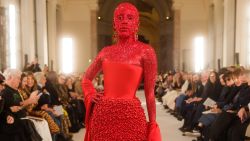


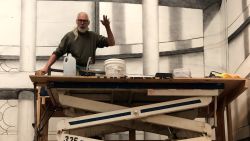





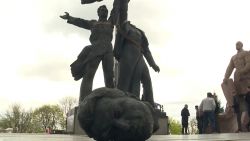
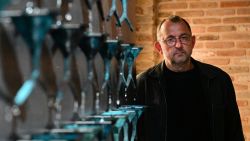
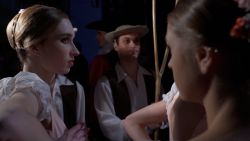
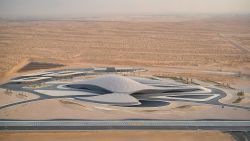
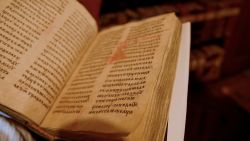






!["When you come from Algeria, even I would say from Morocco and Tunisia, [migration] is a very, not normal, but it's a topic that a lot of people talk about, when you go to Algeria. So many people come and tell you, oh, you know, we would love to go and live there [in France] you're so lucky. It's very much part of my life." <br /><br />Transitional Landscape, 2006](https://media.cnn.com/api/v1/images/stellar/prod/160606185832-zineb-sedira.jpg?q=w_2371,h_763,x_0,y_0,c_fill/h_447)
!["I've made works that look at languages, transmission, immigration, and displacement, and all that through film, video and photography.<br /> <br />I did a very touching piece [Mother Tongue, 2002] where three women -- so three different generations, three different countries, three languages -- are talking to each other in their own mother tongue." <br /><br />Mother, Daughter and I, 2003<br />](https://media.cnn.com/api/v1/images/stellar/prod/160606171213-zineb-sedira-1.jpg?q=w_6010,h_2500,x_0,y_0,c_fill/h_447)





